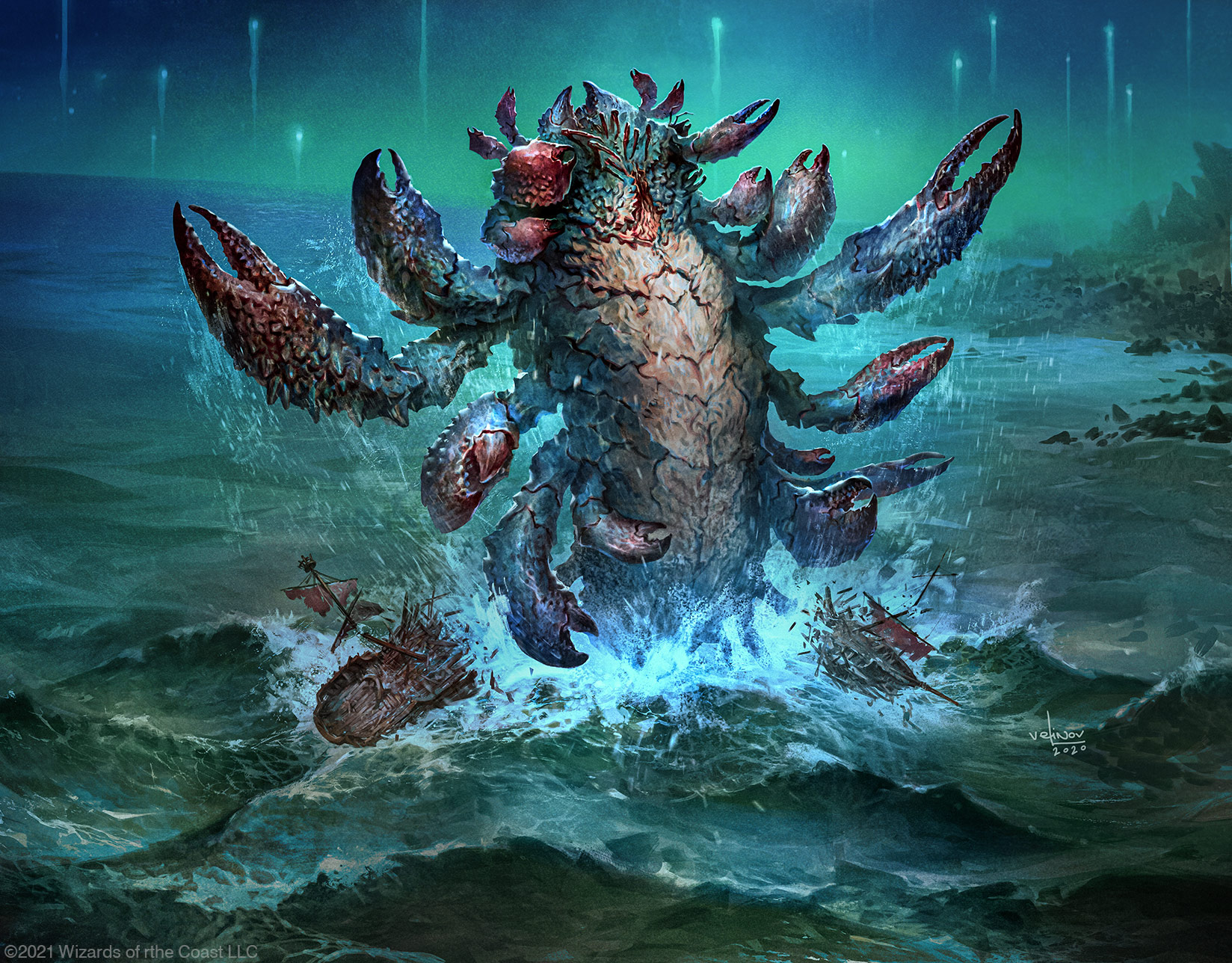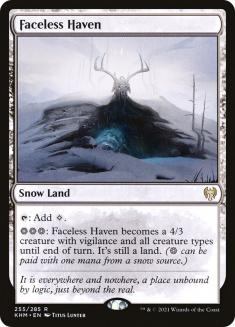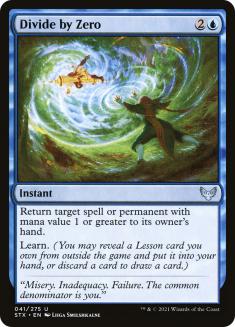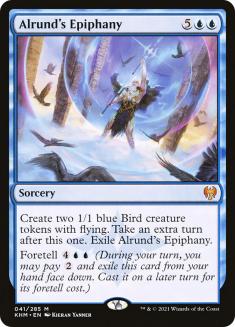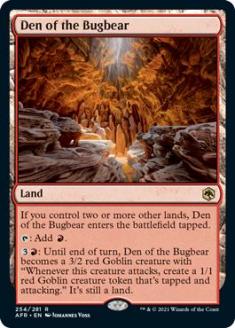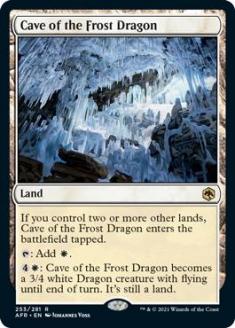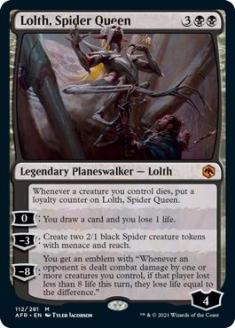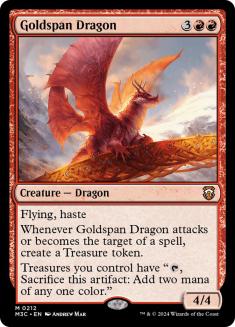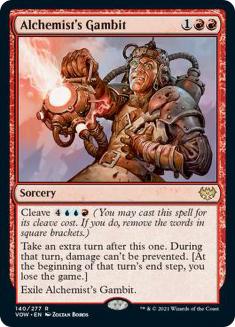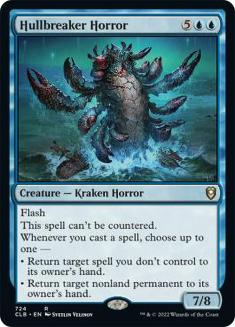Wait, what? I thought we just experienced yet another set of bannings in Magic’s flagship (lol) competitive format. Why am I talking unbans?
The reason is simple. Unlike many past Standard bans, I’m not sure that any of these cards represented a true “problem” for the metagame. Win rates for Alrund’s Epiphany decks were strong, especially when the game’s best got their hands on the deck, but most results pointed to its dominance falling within an acceptable range of outcomes. Faceless Haven was a key card in aggressive decks, but those decks came in multiple flavors, with all five colors dipping their toes in the water at various points in the card’s lifespan.
And if anyone tells you they had Divide by Zero on their “soon-to-be-banned” list at the release of Strixhaven, they’re lying. I certainly believe it’s a powerful card, but some portion of this decision is Divide by Zero taking a bullet for Lier, Disciple of the Drowned.
To me, the common thread these three cards share is their ability to stifle creativity in deckbuilding. They all solve a problem so efficiently that they render any discussion of other options moot.
- Alrund’s Epiphany was always going to be the best end-game.
- Faceless Haven was always going to drive the best aggressive decks.
- Divide By Zero was always going to be the best all-around answer.
With these three questions solved, so much of the typical ebb and flow of deckbuilding was invalidated. For a Magic format to succeed, the answers to these questions need to change on a week-to-week basis. In the Arena ladder era, the onus is on design to make sure the answers to these questions remain fluid. In the past, a singular data point (i.e., tournament result) could create a false skew in the metagame. The misinformation functioned as a bailout for a format that could otherwise find itself quickly solved. With ladder being the primary driver of competitive play now, this is far less likely to occur, since achievement is based on aggregate results.
There are a few potential responses to this phenomenon. You could throw your hands up and say, “Standard doesn’t work in the Arena era!” Given the past couple of years, there’s a lot of evidence supporting this theory. This is some of the reason why I’ve come around to the idea of just eliminating Standard.
You could make a Standard alternative. See Alchemy. Alchemy remains a fantastic idea with the potential to revitalize Magic, but it’s too damn greedy for its own good. After the very first round of nerfs invalidated most of the new cards I’ve crafted, I’ve decided to cut my losses here and bail on the format. Adjustments like this are simply not fair in the absence of either a dusting system or wildcard refunds. I’ll endure a lot of profit-seeking from my favorite games. After all, I want them to succeed. Alchemy, and by proxy Historic, just go way too far.
The other solution is to aggressively manage the poles of your format. In the era after Kaldheim, I think design has done a legitimately great job of this, with one glaring exception that could have just as easily been banned away here. The problem with doing this is two-fold. First, you risk pushing everything towards a midrange-soup style of gameplay. Honestly, given how different this would be from every other Magic format, I don’t really hate this outcome. There’s a worse fate a format can endure than feeling like Khans block, and it probably looks like the utter irrelevance Standard has at the moment.
The second problem is far larger though. By aggressively managing the poles, you’re taking away a lot of your ability to design the cards that now function as your primary driver of sales—cards for Commander (and to a lesser extent Modern). It’s this second issue that really makes me feel like Standard is no longer worth saving. It’s not the onboarding system for new players, and paper competitors will almost certainly prefer a non-rotating format like Pioneer as the new flagbearer for casual/competitive play like Friday Night Magic.
This was just supposed to be a brief intro so I could talk about the Standard cards made better by Tuesday’s bannings. As is often the case for me these days, it quickly spiraled into a vehicle to talk about the overarching issues facing Magic right now. I’m genuinely sorry if that is frustrating. It’s hard not to see the writing on the wall though. Things are changing for Magic in a big way, and I feel like I’d be doing my readers a huge disservice if I just stuck my head in the sand and kept handing out decklists.
I do have thoughts on what’s next for Standard though, and while I expect a better format after these changes, there are a few cards that I expect to step up and have an outsized influence on the format now. These are my Top 5.
5. Wrenn and Seven
Wrenn and Seven had a few weeks where it seemed destined to be the focal point of Standard. In terms of classic planeswalkers, it kind of does it all. Consider how it lines up with the cards that are now leaving the format though. Alrund’s Epiphany went over the top of it. Divide by Zero punished both the initial cast of the card and any tokens made on previous turns. Faceless Haven may not directly challenge Wrenn and Seven that well, but it certainly shares some of the same DNA as a card that instilled longevity in a gameplan while also accomplishing another task.
Not only does the absence of these cards suggest good things for Wrenn and Seven, but I’d argue that Esika’s Chariot is a somewhat surprising exclusion from updates to the Banned List. Again, an early champion of post-rotation Standard that seemed poised for bigger things, the combo of Wrenn and Seven plus Esika’s Chariot couldn’t keep pace with the end-game of a copied Alrund’s Epiphany. This duo back in the mix opens all kinds of midrange angles such as Storm the Festival and even weird Jund Aggro lists, provided there isn’t some new end-game that could also potentially invalidate all of these midrange approaches… Yeah, wait for it.
4. Den of the Bugbear, Cave of the Frost Dragon, and Lair of the Hydra
Faceless Haven’s dominance of Standard meant that the creature-lands of Adventures in the Forgotten Realms were relegated to light duty. These cards were meant for so much more than to just be copies five through seven of Faceless Haven. Den of the Bugbear is the best of these lands, and I am optimistic that this edge has the potential to bring Mono-Red Aggro back into the conversation.
More importantly, the banning of Faceless Haven makes the prospect of playing a multicolor aggressive deck much more appealing. Recently, Naya Aggro has started picking up steam on Magic Online, and while I have zero idea why this deck thinks straining its mana for Halana and Alena, Partners is worth it, this is an obvious clue about what the future of aggro can look like in Standard.
Creatures (28)
- 4 Thalia, Guardian of Thraben
- 1 Legion Angel
- 4 Luminarch Aspirant
- 4 Reidane, God of the Worthy
- 1 Battlefield Raptor
- 4 Brutal Cathar
- 2 Chaplain of Alms
- 2 Intrepid Adversary
- 2 Adeline, Resplendent Cathar
- 4 Halana and Alena, Partners
Lands (24)
Spells (8)

3. Lolth, Spider Queen
Mono-Black has had a resurgence in the Alchemy format, but that’s been almost entirely on the back of cheap two-for-ones and Sanguine Brushstroke. Early lists attempted to work all the way up to Lolth, Spider Queen, but surprise, Divide by Zero or the possibility of never taking another turn made jamming five-mana spells a very bad idea.
This format reset at least opens the possibility that a five-mana spell could be playable again. Playing Lolth into the other cards on this list will mostly leave you ahead on the transaction… again, with one possible glaring exception. The puzzle has a more interesting solution than just “play Mono-Black again” though due to the Faceless Haven ban. Without the incentive to stay monocolored, we can look at all the splashes. Indeed, Orzhov was even having success in the pre-ban metagame.
Creatures (16)
- 1 Legion Angel
- 4 Luminarch Aspirant
- 2 Reidane, God of the Worthy
- 4 Graveyard Trespasser
- 3 Henrika Domnathi
- 2 Edgar, Charmed Groom
Planeswalkers (3)
Lands (25)
Spells (16)

2. Goldspan Dragon
Here’s where things start to get a little sticky. Does it matter how good your Time Walk effect is if it’s just a bonus part of your plan? Based on my own experience in with Alchemy Dragons, I think the answer will often be “No.”
If you still just want to win after untapping with a Goldspan Dragon, it isn’t that tough to make it happen. Sure, you might need to clean up some Spider tokens with a Cinderclasm. Maybe you’ll have to leverage the damage from your Ashmouth Dragon a bit more. Whatever the setup looks like, Goldspan Dragon retains the potential to just win the game on the spot.
I don’t know how much I truly believe this, but there is some small part of me that is worried that Alrund’s Epiphany was tricking us into playing a worse Time Walk for the Dragon strategies. I’m not arguing Alchemist’s Gambit is a better card than Epiphany, but when your primary threat always generates two mana, having a three-mana extra turn will just lead to a lot of scenarios where your opponents do not get another turn.
Even if Goldspan Dragon isn’t in the extra-turn business anymore, it benefits in a very real way from the fact that no one else is either. One of the few flaws in tapping out for a Goldspan Dragon was that, if it was answered, your shields were down and you may not go again. Not only is that threat gone, but the cleanest and most widely played answer in Divide by Zero is also hitting the Banned List.
I’ve said before that if Goldspan Dragon is the best card in your format, you’re probably in a okay place gameplay-wise. We’re getting very close to testing that theory out. With, of course, One. Big. Exception.
1. Hullbreaker Horror
I have not shut up about Hullbreaker Horror for a very long time now. I’m probably best served recycling some of the many, many words I have written on the topic.
Nothing I’ve said previously has changed. In fact, Divide by Zero, one of the extremely few ways to interact with Hullbreaker Horror on the stack, is no longer a thing. The aggro clocks that could occasionally outrace a Hullbreaker Horror end-game have slowed down. And the only conceivable way to go even bigger, Alrund’s Epiphany, just joined the Banned List.
Just look at the far more powerful Alchemy format, which has still taken steps to nerf Hullbreaker Horror’s uncounterability (and the wallets of anyone purchasing the card solely for its Historic applications). It’s clear this card messes up the game of Magic.
If you wanted a true reset of Standard, Hullbreaker Horror also needed to be banned. Instead, we’re walking into a world where the cards are changing, but the gameplay may not be. If this is true, what was the point of these moves? Can you really cast Lolth and Wrenn and Seven into Hullbreaker Horror? Can Kamigawa: Neon Dynasty matter under these constraints?
I guess there’s nothing to do but wait and see… again.

